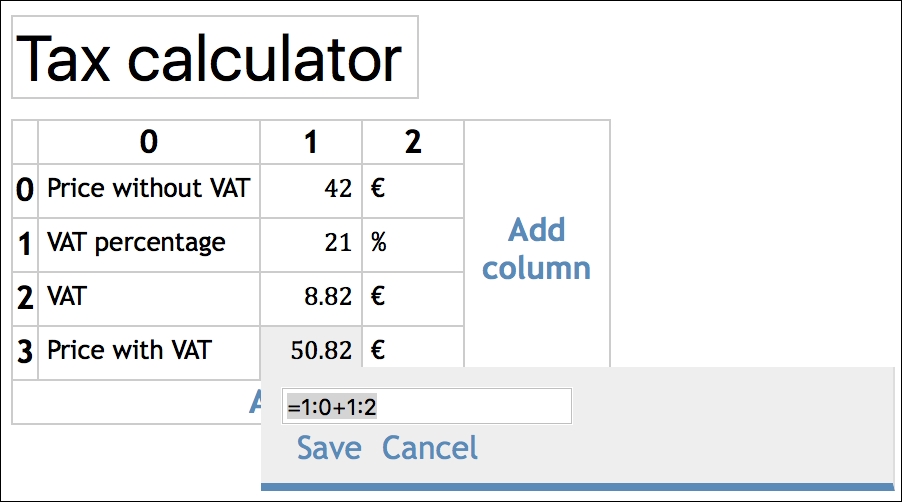Fields of the spreadsheet can contain expressions, that can be calculated. To calculate these values, the input of the user must be converted to a data structure, which can then be used to calculate the result of that field.

These expressions can contain constants, operations, references to other fields or a parenthesized expression:
Constants:
0,42,10.2,4e6,7.5e8Unary expression:
-expression,expression!Binary expression:
expression + expression,expression / expressionReferences:
3:1(third column, first row)Parenthesized expression:
(expression)
We will create these types in lib/model/expression.ts. First we import factorial, since we will need it later on.
import { factorial } from "./utils";



